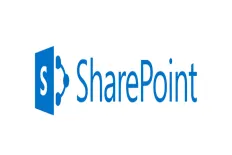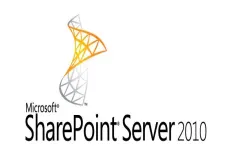This post will focus on the following topics.
Abstract
The second part of the MOSS 2007 upgrade process is the Shared Services Provider (SSP) and my sites upgrade.
In this step you will upgrade the "My Sites" web application, In a nutshell, it's the web application containing all organization user profiles with the same organization structure based on the synchronization with the active directory through the SharePoint user profile synchronization service.
Upgrading the "My Sites" web application looks similar to upgrading any web application with its content database as described in the previous post MOSS 2007 upgrade - Upgrading content databases.
Before we begin in the SSP and my sites' migration, you should check the old MOSS 2007 my sites web application and its content database, take a SQL backup from the content database and restore it on the new SharePoint 2010 database server as illustrated before in the previous post MOSS 2007 upgrade - Upgrading content databases.
This post will start considering you have the old MOSS 2007 my sites content database as well as the SSP database restored on the SharePoint 2010 database server.
Shared Services Provider (SSP) migration
To handle the SSP migration you will create a user profile service application on the SharePoint 2010 server, start the user profile synchronization service then upgrade the my sites content database. The following steps will guide you through this.
Managed Metadata Service
The first step in the SSP migration is to check if the Managed Metadata application service is created and if the Managed Metadata service is started. To achieve this, follow these steps.
- Log into the SharePoint 2010 server.
- Open SharePoint Central Administration.
- On the left, click Application Management.
- Under Service Applications, click Manage Service Applications.
- Check if the Managed Metadata service application is among your service applications and has its status as "Started" but if not, then on the SharePoint ribbon at the top, click New then Managed Metadata Service.
- On the "Create New Managed Metadata Service" window, type in a name for the service application, a database name and an application pool name then click OK.
To make sure that the Managed Metadata Web Service is started, then follow these steps.
- On the Central Administration, click Application Management on the left.
- Under Service Applications, click Manage services on server.
- Check if the Managed Metadata Web Service has its status as "Started" and if not then click "Start" to start it.
User profile service
Now it's time for the second step in SSP migration, which is creating the user profile service application.
- Log into the SharePoint 2010 server.
- Open SharePoint 2010 Management Shell command prompt. You can do this by clicking Start, All Programs, Microsoft SharePoint 2010 Products, then SharePoint 2010 Management Shell.
- Create a new application pool for the user profile service application. To do this, type in this command
new-spserviceapplicationpool –name spnewprofile –account domain\account
Where spnewprofile is the name of the new application pool and domain\account is the account that should be set as the application pool identity. - Create a new user profile application service. On the same SharePoint 2010 Management Shell command prompt, type in this command
new-spprofileserviceapplication -applicationpool spnewprofile –name newprofileservice –profiledbname sspdbname –profiledbserver servername
Where spnewprofile is the application pool name of the application pool that you created in step 3, newprofileservice is the name of the user profile application service, sspdbname is the name of the SSP database you have restored on the SharePoint 2010 database server and servername is the database server name. This command will result in giving you an ID in a GUID format. Copy this ID from the command prompt by marking it and hitting the Enter button. This ID will be used in the next step. - Create a new proxy for the user profile service application created in step 4. Type in this command in the SharePoint 2010 Management Shell
new-spprofileserviceapplicationproxy –serviceapplication ID –name newspprofileserviceapplicationproxy –defaultproxygroup
Where ID is the user profile service application ID that you have copied in step 4 and newspprofileserviceapplicationproxy is the proxy name. - Update the User Profile service application permissions by going to the Central Administration, then click Application Management on the left.
- Under Service Applications, click Manage Service Applications.
- Select the user profile service application that you have created, then click Administrators from the SharePoint ribbon at the top.
- Add the user in question and give him full control, then click OK.
- Now it's time to start the User Profile and User Profile Synchronization services. To do this, click Application Management on the left of the SharePoint 2010 Central Administration.
- Under Service Applications, click Manage services on server.
- Scroll down to the User Profile Service and the User Profile Synchronization Service and start them.
- Reset your IIS. In the SharePoint 2010 Management Shell, type in this command
iisreset
My sites upgrade
Now, the third step in SSP migration and my sites is the "My Sites" upgrade. Again, the "My Sites" web application is the one containing all user profiles with their organization structure as configured in the active directory.
To upgrade the "My Sites" web application, follow these steps:
- On SharePoint 2010 Central Administration, create a new web application for my sites. Its URL will be assumed as http://mysiteswebapp in this post.
- It's time to test the restored content database of my sites MOSS 2007 web application against the newly create SharePoint 2010 web application in step 1. To do this, type in this command
test-spcontentdatabase –name mysitesdbname –webapplication http://mysiteswebapp
Where mysitesdbname is the content database name of my sites and http://mysiteswebapp is the new my sites web application URL created in step 1. This test should give you no errors. - Now, as done before with content databases, it's time to mount it to the web application created in step 1. Type in this command to do this
mount -spcontentdatabase –name mysitesdbname –webapplication http://mysiteswebapp
Set up the new My sites
After you have upgraded your "my sites" web application successfully, it's time to set it up on SharePoint 2010 Central Administration to allow all users to be redirected correctly to the new my sites web application when they click, for example, My Profile.
To do this, follow these steps.
- Open SharePoint 2010 Central Administration.
- Click Application Management on the left.
- Under Service Applications, click Manage service applications.
- Select the user profile service application created before and on the SharePoint ribbon, at the top, click Manage.
- Under My Sites Settings, click Set up My Sites.
- In My Site Host section, write your upgraded my sites web application's URL.
- In Personal Site Location section, write a wildcard location to be used for the personal sites.
- In the Read Permissions Level section, add all authenticated users group.
- Click OK.
Summary
In this post, you have upgraded the Shared Services Provider and My Sites web application. You have done this going through the main four steps.
- Managed Metadata application service creation and starting the Managed Metadata service.
- User profile application service creation and starting the user profile and user profile synchronization service.
- Upgrading My Sites web application.
- Setting up My Sites for all users
Read Next
The following articles are related to moss 2007 upgrade - ssp migration and my sites.






